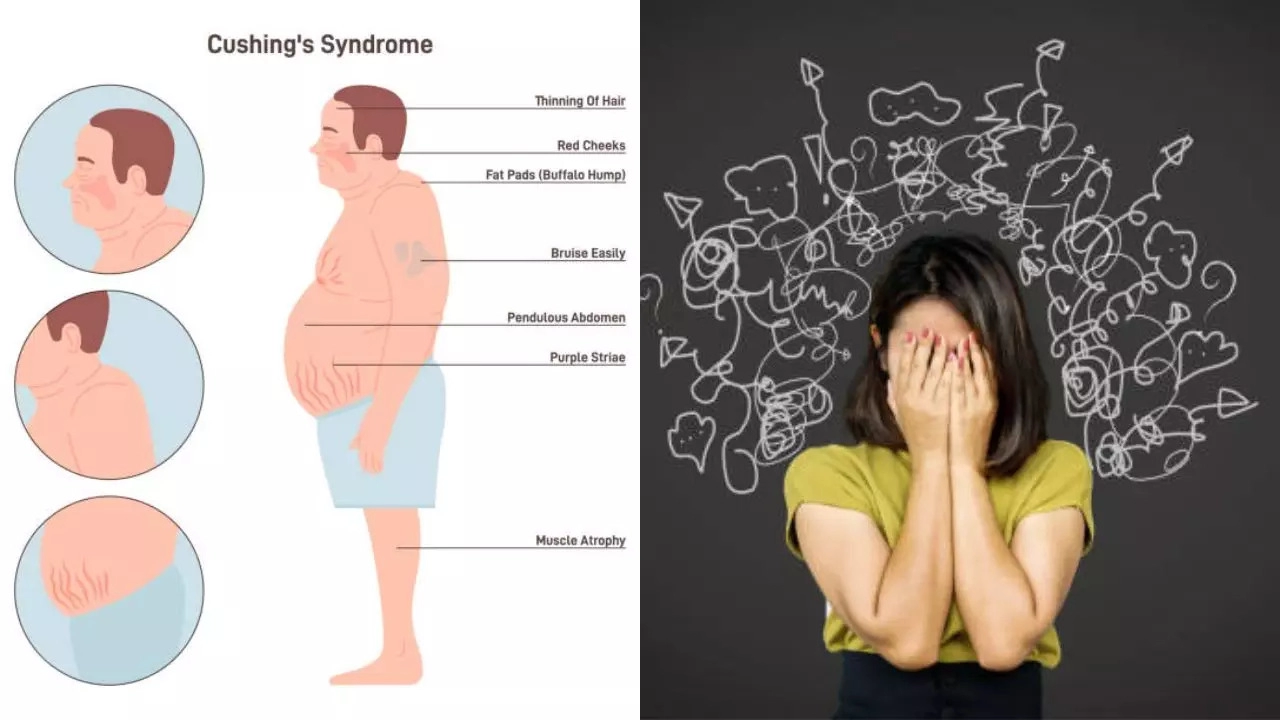Ashima Sharda Mahindra • 23 Oct 2024
Feeling A Hump Between The Shoulders? Could Be Due To High Stress Levels; Know How

While cortisol is a part of your body’s natural response to threats of harm or danger, too much stress leads to Cushing syndrome or hypercortisolism
Hump Behind Shoulders: Repeated stress, especially around festivals, is common as most people struggle between work and family commitments. However, consistent stress and certain underlying conditions can spike your cortisol levels – leading to a range of symptoms including weight gain, fatigue, and a hump between the shoulders – known as Cushing's syndrome.
While cortisol is a part of your body’s natural response to threats of harm or danger, experts say if cortisol is consistently too high, it usually leads to an underlying health problem like Cushing syndrome or hypercortisolism.
Symptoms of Cushing syndrome
Apart from a hump between the shoulders, a few signs and symptoms of Cushing's syndrome include:
- Weight gain
- Fatty deposits, especially in the midsection, your face, which becomes round and moon-shaped
- Purple stretch marks around your breasts, arms, abdomen, and thighs
- Thinning skin, which causes bruises easily
- Injuries on your skin that are very slow to heal
- Acne and other skin issues
- Fatigue and tiredness
- Muscle weakness
- High blood sugar levels
- High blood pressure
- Increased urination
- Mood swings
- Irritability and depression
- Increased number of infections
Why does high cortisol cause a hump in the back?
According to experts, high levels of cortisol lead to increased fat synthesis – which begins to get deposited in and around your neck, known as lipodystrophy. This condition produces the characteristic buffalo hump – which can also be due to an adrenal tumour, lung tumour, or glucocorticoid medications.
Also, small tumours develop outside of a few glands, which are typically malignant. The most common type is small-cell lung cancer.
Who is affected by Cushing's syndrome?
According to experts, those most commonly affected by Cushing syndrome include children, teenagers, and adults - mostly those ages 25-50 years. People who take cortisol medication - to treat asthma and rheumatoid arthritis are also vulnerable.
Around 70 per cent of those with Cushing syndrome are women.
How is Cushing's syndrome diagnosed?
According to doctors, if they suspect hypercortisolism - there are certain guidelines they may follow. Apart from asking your question about what is causing the stress, they would also have a look at your medical history - perform a physical examination, and then conduct some laboratory tests.
Cushing syndrome can sometimes be difficult to diagnose. If you tell the doctor you have fatigue and weight gain, they might not immediately think of Cushing syndrome. These types of symptoms are common to many different kinds of diseases.
Many times, the syndrome is also mistaken for polycystic ovary syndrome or metabolic syndrome. So, a urinary cortisol test, salivary test, low-dose dexamethasone suppression test, high-dose dexamethasone suppression test, MRI, CT scan, and a Bilateral inferior petrosal sinus sampling can be done to get a proper diagnosis.
How is Cushing's syndrome treated?
According to experts, the type of treatment depends on the underlying cause of the high cortisol levels. If you use glucocorticoids – the doctor will lower the dosage or prescribe a non-glucocorticoid medication.
Apart from that, to remove the hump, the doctor may include chemotherapy, medications, radiation and surgery.
Get Latest News Live on Times Now along with Breaking News and Top Headlines from Health and around the world.